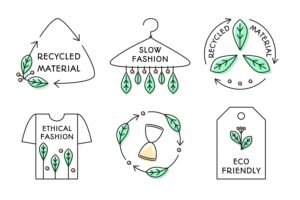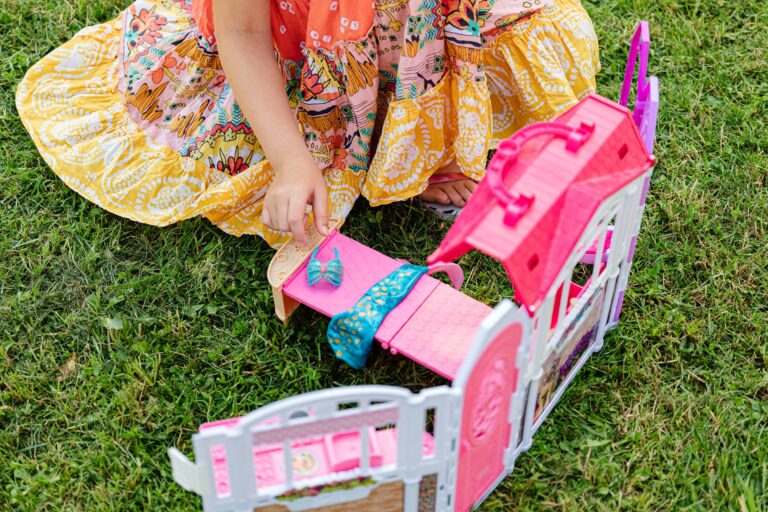Sustainable Fashion: The Future of Fabrics and Thread
Sustainable fashion has become an increasingly important topic in recent years. With the rise of fast fashion and its impact on the environment, it’s more important than ever to make our wardrobes more eco-friendly. In this blog post, we will explore what sustainable fashion is, the impact of fast fashion on the environment, sustainable fashion alternatives, and how to make your wardrobe more eco-friendly.
What is Sustainable Fashion?
Sustainable fashion has become a buzzword in recent years, but what exactly does it mean? At its core, sustainable fashion is a movement towards creating clothing that is produced in an environmentally and socially responsible manner. It is about making fashion that is good for people and the planet.
Sustainable fashion takes into account the entire lifecycle of a garment, from the sourcing of materials to the way it is disposed of.
This means using materials that are eco-friendly and renewable, such as organic cotton and bamboo, and avoiding materials that are harmful to the environment, such as synthetic fabrics like polyester. Sustainable fashion also prioritizes ethical and sustainable production methods, such as fair labor practices and reducing waste.
One of the key goals of sustainable fashion is to reduce the negative impact that the fashion industry has on the environment.
1. Be Environmentally Responsible
The fashion industry is the second-largest polluter in the world, after the oil industry. The production of clothing requires a large amount of resources, including water, energy, and land. The use of synthetic fabrics also contributes to the problem, as it releases harmful chemicals into the environment.
2. Using Eco-friendly Materials
Sustainable fashion aims to reduce this impact by using eco-friendly materials and production methods. For example, some sustainable fashion brands use recycled materials to create new clothing, reducing the amount of waste that ends up in landfills. Others use renewable energy sources, such as solar or wind power, to power their production facilities.
3. Creating Clothing that will last for years
Sustainable fashion is also about creating clothing that is built to last. Fast fashion has created a culture of disposable clothing, where items are worn a few times before being thrown away. On the other hand, focuses on creating high-quality clothing that will last for years. This reduces the need for new clothing and reduces waste.
4. Prioritizes ethical production methods
In addition to being environmentally responsible, sustainable fashion also prioritizes ethical production methods. This means ensuring that workers are paid fairly, work in safe conditions, and have access to benefits like healthcare and education. Many sustainable fashion brands prioritize transparency, providing information about their supply chain and production methods.
This is not just a trend, it is a movement towards a more responsible and sustainable future. By choosing sustainable fashion brands and making conscious choices about our clothing, we can reduce our impact on the environment and support ethical and sustainable practices in the fashion industry.

Fast Fashion and Its Impact on the Environment
Fast fashion is a term used to describe the mass production of inexpensive clothing that is designed to be worn for a short period of time and then disposed of. Fast fashion has a significant impact on the environment, from the resources used to make the clothes to the waste generated from their disposal. The fashion industry is the second largest polluter in the world, after the oil industry, and fast fashion is a major contributor to this problem.
Fast fashion brands use a large amount of natural resources, including water, energy, and land, to produce their clothing. In addition, the production of synthetic fabrics, such as polyester, releases harmful chemicals into the environment. Fast fashion also contributes to the problem of textile waste, as many people dispose of their clothes after only a few wears.
Read also: Top 10 Must-Have Fabrics in Every Fashionista’s Wardrobe
Sustainable Fashion Alternatives
Sustainable fashion is an alternative to fast fashion that is designed to have a lower impact on the environment. Sustainable fashion takes into account the entire lifecycle of clothing, from the materials used to make it to the way it is disposed of. Sustainable fashion brands use eco-friendly materials, such as organic cotton and recycled polyester, and prioritize ethical and sustainable production methods.
There are many benefits to choosing sustainable fashion, including reduced environmental impact, improved working conditions for garment workers, and supporting small and independent businesses. Some popular sustainable fashion brands include Everlane, Reformation, and Patagonia.
How to Make Your Wardrobe More Eco-Friendly
There are many ways to make your wardrobe more eco-friendly, including:
Shop Secondhand:
Shopping secondhand is a great way to reduce your fashion carbon footprint. Thrift stores, consignment shops, and online marketplaces like Depop and Poshmark are great places to find gently used clothing at a fraction of the cost of new clothes.
Choose Sustainable Brands:
When you do need to buy new clothes, choose sustainable fashion brands that prioritize eco-friendly materials and ethical production methods.
Rent Clothes:
Renting clothes is another way to reduce your fashion carbon footprint. Websites like Rent the Runway and Nuuly allow you to rent designer clothes for a fraction of the cost of buying them.
Upcycle and Repurpose:
Instead of throwing out old clothes, consider upcycling or repurposing them. You can turn an old t-shirt into a crop top or a pair of jeans into shorts, for example.
Conclusion
In conclusion, sustainable fashion is an important topic that deserves our attention. Fast fashion has a significant impact on the environment, but there are sustainable fashion alternatives that prioritize eco-friendly materials and ethical production methods. By making small changes to our wardrobe, such as shopping secondhand or choosing sustainable fashion brands, we can reduce our fashion carbon footprint and contribute to a more sustainable future.



